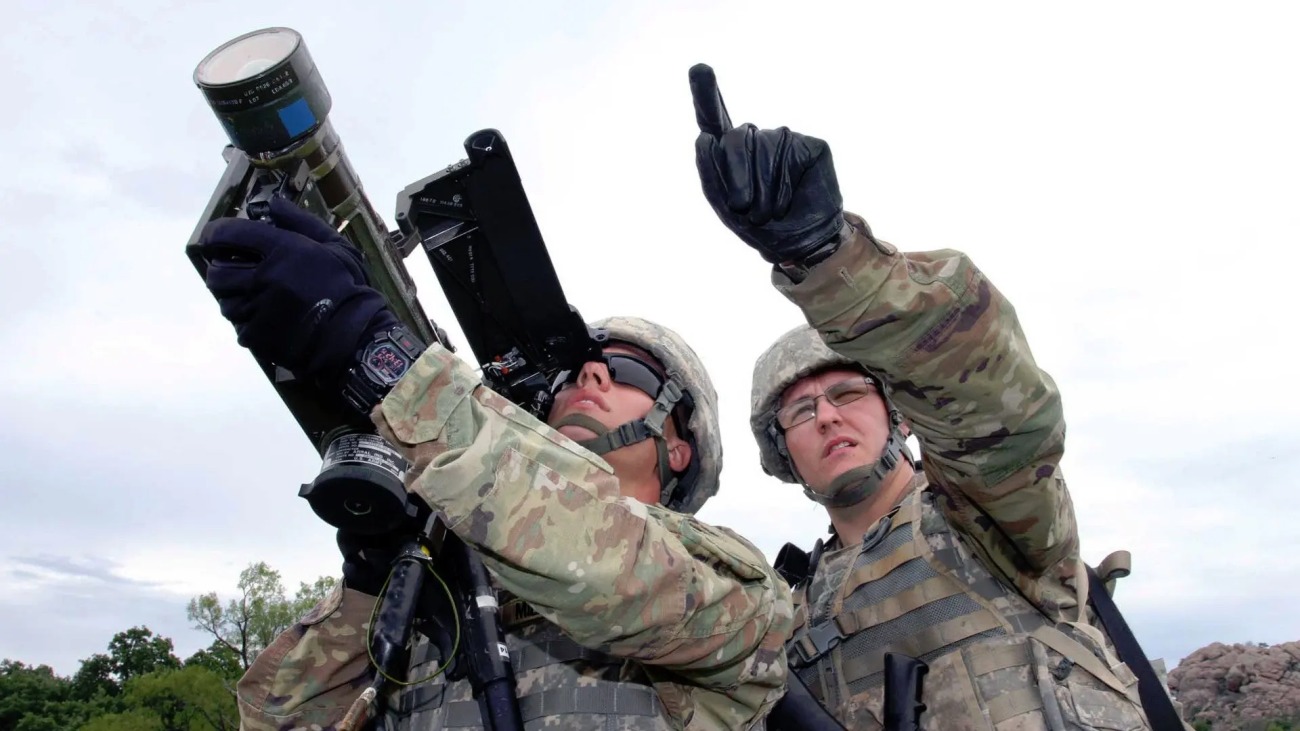Chinese state television aired a documentary series called Quenching, offering a dramatic portrayal of what a potential People’s Liberation Army (PLA) amphibious assault on Taiwan could look like. The timing is noteworthy, as it coincides with an uptick in PLA training exercises aimed at preparing for such an operation.
However, one key revelation stood out: the PLA’s concern over US-supplied MANPADS (Man-Portable Air-Defence Systems), which are viewed as a major threat if China proceeds with its dangerous plan to invade Taiwan.
China’s ‘Quenching’ On Taiwan
The latest episode of ‘Quenching’ showcased various military maneuvers, including a large-scale helicopter air assault led by the Ground Force’s aviation unit, anti-access electronic warfare by an aircraft carrier strike group, and long-range rocket fire drills. Reconnaissance and strike drones were highlighted as key to supporting helicopter landing missions on the island.
Beijing’s stance remains clear: it considers Taiwan a part of China, to be reunified by force if necessary.
In the simulated assault, PLA helicopters and landing forces face stiff resistance from enemy units armed with MANPADS, which could pose a serious challenge.
“As man-portable air defense weapons are widely used in battlefields, helicopters are under growing threat,” a PLA officer commented during the broadcast. “We must find new ways to win in real battles,” he added.
The documentary underscores China’s strategic focus on overcoming potential obstacles in any future conflict over Taiwan, highlighting the evolving military dynamics in the region.
Taiwan’s Stinger Stockpile
In May 2023, Taiwan’s Armed Forces received 250 FIM-92 Stinger missiles from the U.S. as part of a $500 million military aid package. This followed the U.S. State Department’s 2019 approval of Taiwan’s request for Block I Stinger missiles.
Thanks To U.S. & India, Israel’s Weapons Sale ‘Breaking Records’ Despite War On Multiple Fronts
Amid escalating tensions with China, Taiwan is further strengthening its air defenses. Earlier this month, the Ministry of National Defense announced plans to acquire an additional 1,985 Stinger missiles from the U.S., aiming to boost its stockpile fivefold—from 500 to 2,485 missiles.

MANPADS: Combat-Proven Solution
Designed & developed by General Dynamics, the FIM-92 Stinger has been a key component of the U.S. military arsenal since 1981.
The Stinger man-portable missile offers effective short-range air defense against low-flying enemy aircraft. Designed for use by a single operator, it often benefits from the assistance of a spotter to enhance target accuracy.
Another advantage of the Stinger is its portability. Encased in a 1.5-meter launch tube and weighing around 15 kg, it can be easily carried and operated by a single soldier with minimal training.
Featuring infrared homing technology, the Stinger tracks and engages targets based on their heat signatures, distinguishing friendly aircraft to avoid unnecessary attacks.
The infrared guidance system locks onto the heat emitted by an aircraft’s engine, providing high accuracy despite potential countermeasures. Modern countermeasures might disrupt the missile’s guidance, but they struggle to completely mask the engine’s significant heat signature.
MANPADS are lightweight anti-aircraft weapons intended for rapid deployment by ground forces. They are cost-effective, compact, and mobile, requiring only a single operator for use. These missiles are particularly effective against low or slow-flying aircraft.
A typical MANPADS consists of three main components: a disposable launch tube with a single missile, a thermal battery or coolant unit for pre-firing power, and a reusable gripstock assembly or firing unit. These features make the Stinger relatively easy to transport and conceal.

Stingers In Action: From Iraq To Ukraine
Historically, MANPADS, along with anti-aircraft artillery, were also among the most effective anti-aircraft weapons used by Iraq during the 1991 Gulf War.
Recently, Stinger-Maker ‘Raytheon’ highlights that the missile has demonstrated its effectiveness in four major conflicts, including the current Russian invasion of Ukraine.
Last month, the U.S. announced a new $125 million military aid package for Ukraine, which includes additional Stinger missiles. This comes at a crucial moment as Ukraine’s stockpile of these missiles has been significantly depleted despite receiving them in previous aid packages.
Before the conflict, Ukraine had received over 2,000 Stinger missiles from the U.S., Netherlands, Italy, Latvia, Lithuania, and Germany. These weapons have been used extensively throughout the war, with numerous viral videos capturing Ukrainian forces successfully targeting Russian aircraft.
The U.S.-made MANPADS have proven to be a pivotal asset in Ukraine’s defense, playing a critical role in the ongoing conflict against Russia.
Strategic Asset In Asymmetric War
The provision of MANPADS by the United States to both Ukraine and Taiwan highlights their role as portable yet highly effective tools that can significantly influence asymmetric conflicts.
In Ukraine, Stinger missiles have been instrumental in countering Russian air superiority, compelling shifts in Russian tactics, and diminishing the effectiveness of helicopter-borne assaults.
For Taiwan, the expanding stockpile of Stinger missiles not only serves as a deterrent but also as a critical last line of defense against potential Chinese aggression.
The PLA’s clear apprehension regarding these weapons underscores their effectiveness. As demonstrated in Ukraine, these compact yet powerful systems could play a vital role in Taiwan’s defense strategy.
- Shubhangi Palve is a defense and aerospace journalist. Before joining the EurAsian Times, she worked for E.T. Prime. In this capacity, she focused on covering defense strategies and the defense sector from a financial perspective. She offers over 15 years of extensive experience in the media industry, spanning print, electronic, and online domains.
- Contact the author at shubhapalve (at) gmail (dot) com.




